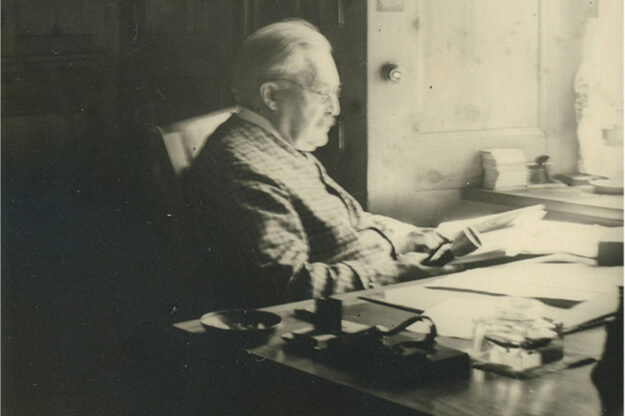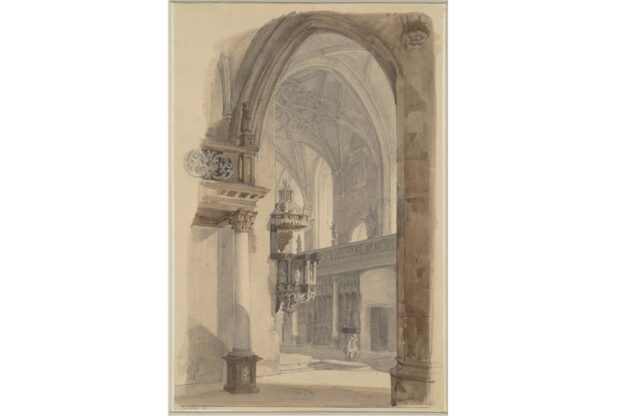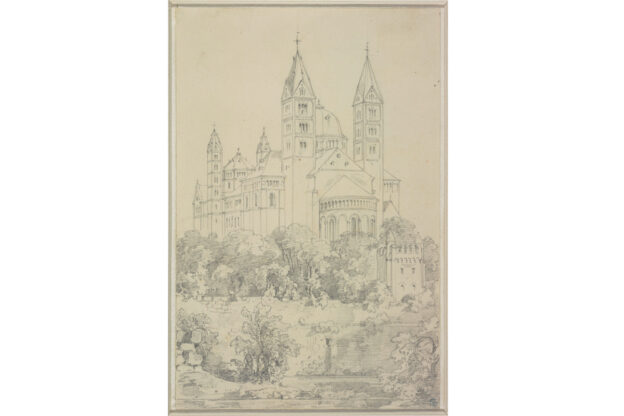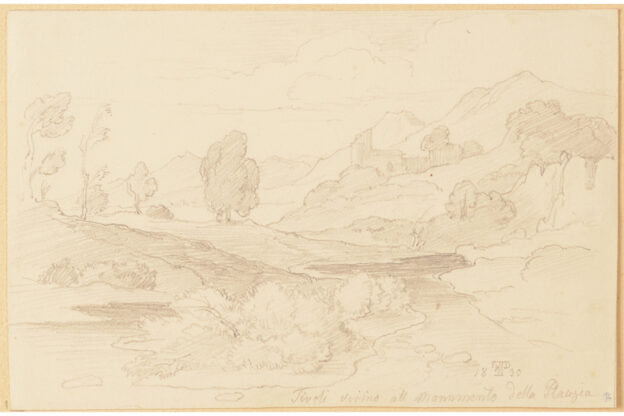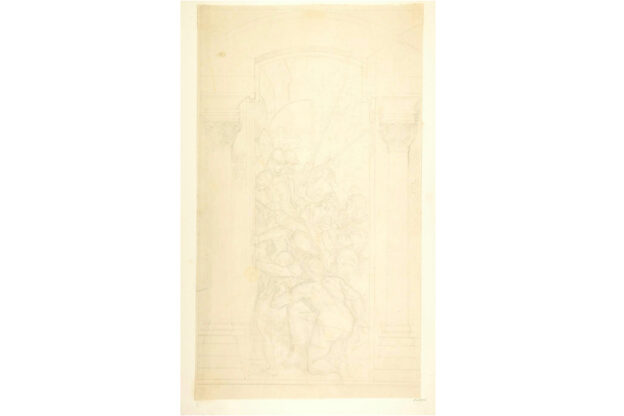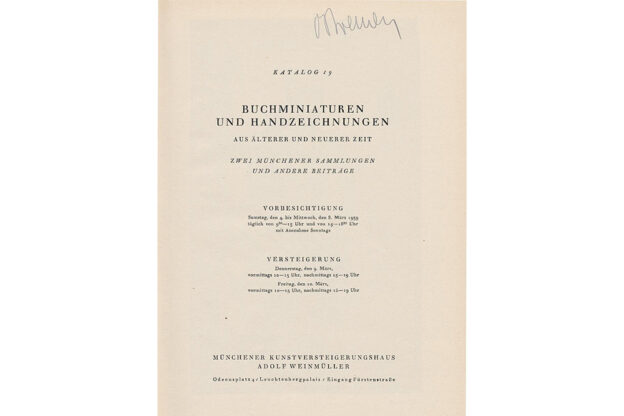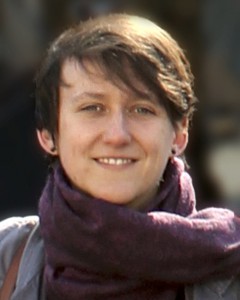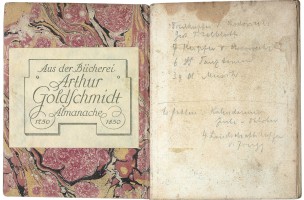The case of Michael Berolzheimer
by Romy Langeheine
>> read German translation here
Sometimes, museums, archives, or libraries only become aware of so-called Nazi loot in their holdings through external queries. For example, in 2008 the German Federal Office for Central Services and Unresolved Property Issues (BADV) enquired at the Klassik Stiftung Weimar with regard to four drawings from the collection of Michael Berolzheimer.
The provenance researchers could indeed identify the objects in the Graphic Art Collections: they were two drawings by Carl Ferdinand Sprosse (1819–1874), one drawing by Moritz von Schwind (1804–1871) as well as another one by Friedrich Preller the Elder (1804–1878).

“Die Schlosskirche in Altenburg” and “Der Dom von Speyer.” Both drawings by Carl Ferdinand Sprosse were part of the Berolzheimer collection. © Klassik Stiftung Weimar.
Research on the former owner Dr. Michael Berolzheimer began. Its aim was a clarification of the circumstances under which the Staatliche Kunstsammlungen zu Weimar had acquired the drawings in 1939.
Michael Berolzheimer was born in Fürth (Bavaria) in 1867. He descended from a Jewish family of entrepreneurs who had gained economic success through the production of pencils, equally in the USA.
The Berolzheimer family was highly respected in Fürth and Nuremberg, not least due to their charitable activities focusing on mass education.
In 1906, the Berolzheimerianum opened up in Fürth. Founded by Heinrich Berolzheimer, it was an educational institution of public utility with a freely accessible library. In addition, he donated considerable sums for the construction of the Artist House and the Luitpold House, a natural history and anthropology collection open to the public, in Nuremberg.

Catalogue no. 19 of the Munich auction house Adolf Weinmüller: “Buchminiaturen und Handzeichnungen aus älterer und neuerer Zeit. Zwei Münchener Sammlungen und andere Beiträge”, auction on 9 and 10 March 1939. The former owners were not named in the catalogue.
After the National Socialists’ rise to power in January 1933, the family was increasingly persecuted by the new regime. Meanwhile Michael Berolzheimer, his wife Melitta Berolzheimer, and her two sons from her first marriage lived in Untergrainau near Garmisch-Partenkirchen. In 1938, the family decided to emigrate to the United States.
In order to be allowed to emigrate, Berolzheimer had to leave most of his art collection behind in Germany.
This also included his collection of valuable drawings and prints.

Michael Berolzheimer in his study, circa 1937. © Private collection
In March 1939, it was offered at auction by the Munich firm of Adolf Weinmüller, which specialized in trading cultural property seized due to Nazi persecution. The four drawings acquired by the Staatliche Kunstsammlungen zu Weimar were also in this sale.
Michael Berolzheimer could neither exert any control over the auction, nor did he receive a share of the proceeds. Consequently, the objects in question are unequivocally Nazi-looted art.
In 1942, Michael Berolzheimer died in Mount Vernon in New York State/US.
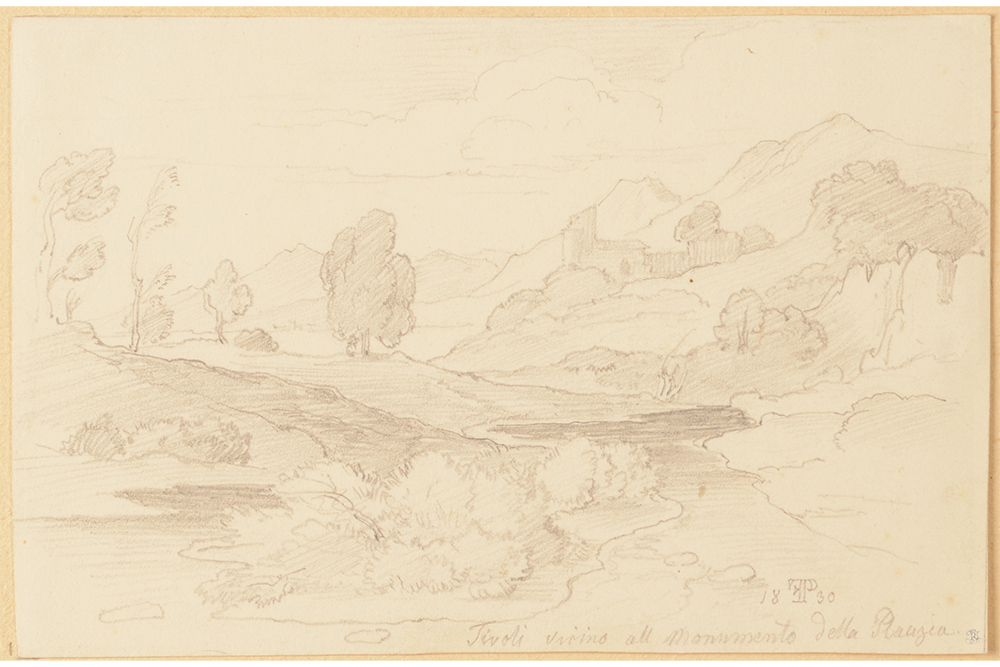
Friedrich Preller the Elder, Landschaft bei Tivoli. © Klassik Stiftung Weimar.
The Klassik Stiftung succeeded in finding the rightful heir.
In 2013, the four drawings were restituted and then reacquired. Hence today, they are rightfully owned by the Klassik Stiftung Weimar.
The Mobile display case presenting the case of the Berolzheimer collection and thus the history of a seizure due to Nazi persecution, will be on view until the end of July 2016 in the entrance hall of the Schlossmuseum.
On the series “Nazi loot in the Klassik Stiftung Weimar”
In the collections of the Klassik Stiftung Weimar there is wrongfully acquired cultural property. Since 2010, the foundation systematically investigates so-called Nazi-looted art and aims to find fair and just solutions with those who were victims of persecution or their heirs. In 2011, the foundation included this task in its mission statement.
In several cases, objects identified as Nazi-looted art could be returned to the heirs of the former owners. Since November 2015, the Mobile display case has been on an itinerary through the entrance halls of the different institutions belonging to the Klassik Stiftung Weimar, presenting individual cases of cultural property seized due to Nazi persecution and documenting the history of the former owners.
A blog entry is to be published on each case.

